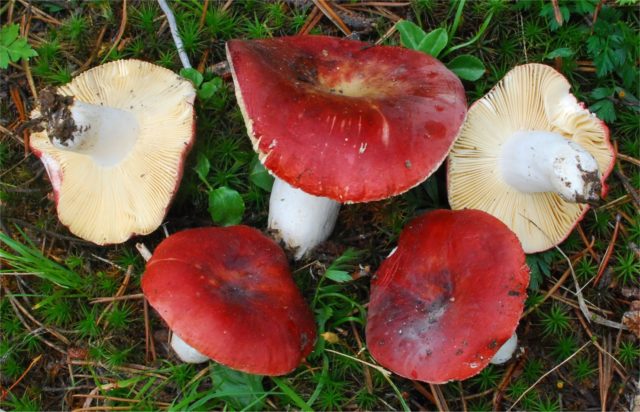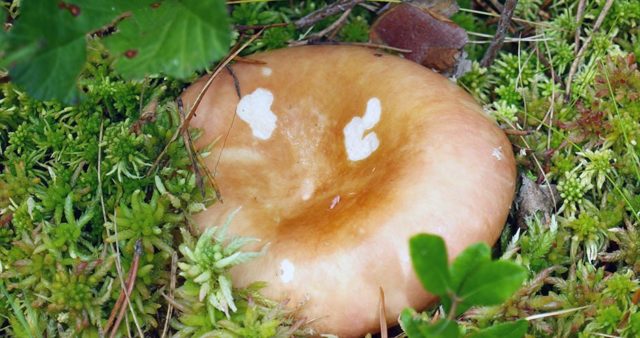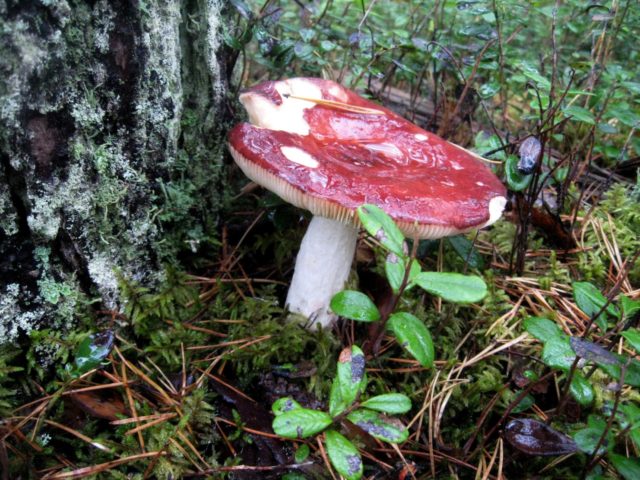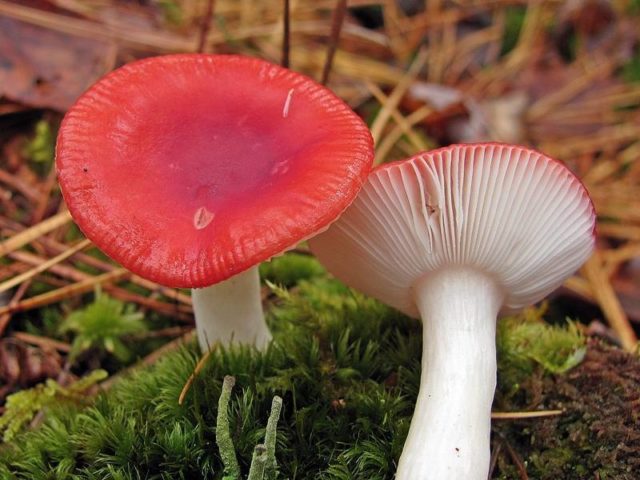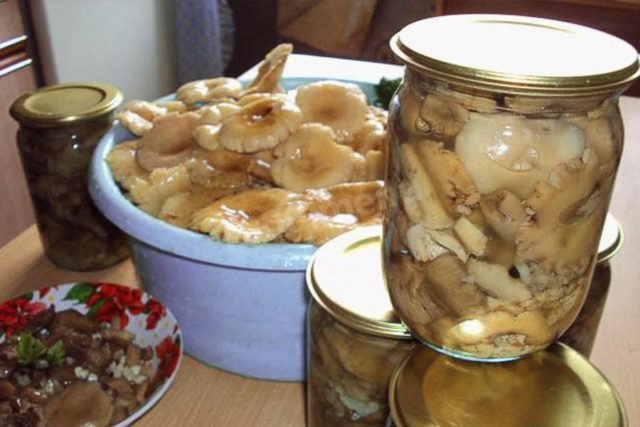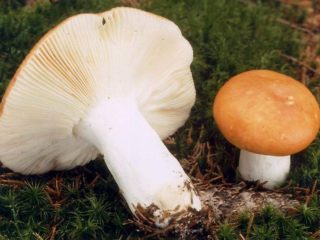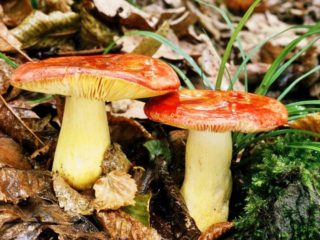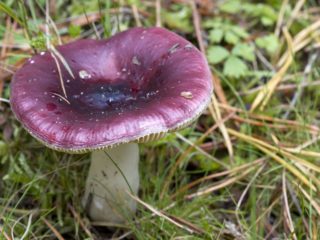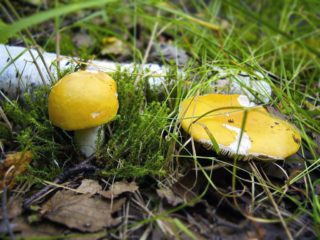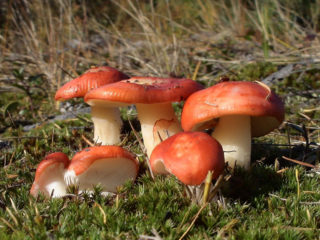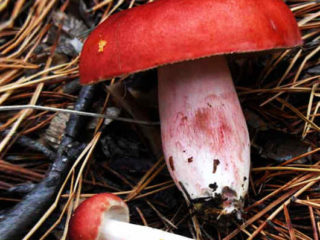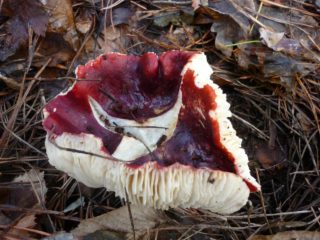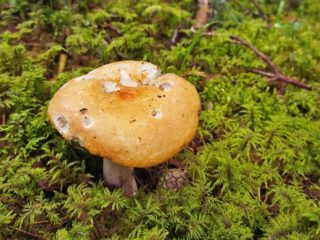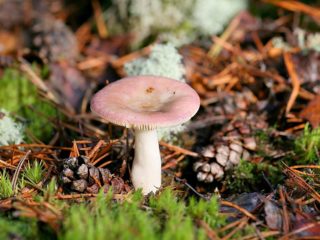Content
Marsh russula is an edible mushroom from the Russula family. This is a typical representative of the family, fully justifying its name - young mushrooms can be eaten with minimal heat treatment. The range of the fungus is very extensive, but within its range the fungus cannot be called common - the need for a large amount of moisture limits its wide distribution. Another name for this representative of the Syroezhkovs is float. Next, the marsh russula will be described, a photo and description of this mushroom will be given.
Where do marsh russulas grow?
Marsh russulas are common in the temperate climate zone of the Northern Hemisphere. They can be found in Eurasia and North America.
Most often, swamp russula grows in coniferous forests, since it enters into symbiosis with the root system of pine. In some cases, it forms mycosis with the roots of dwarf cedar or larch. It prefers humid areas, so the most numerous colonies of this fungus are found in damp forests and along the banks of swamps.
In addition, flotsam can be present in large quantities on various peat bogs and even on sandy soils (provided they are moist enough and there are pine trees growing there).
It is rare in mixed forests; in deciduous forests it is almost impossible to find marsh russula.
What do marsh russulas look like?
The appearance of the marsh russula corresponds to a typical representative of the Russula family. Its fruiting body consists of a large cap and a relatively long straight stem.
The cap has a diameter of 5 to 15 cm. Like all russula, it is initially spherical, but with age it turns into a flat one with a depressed area in the middle. The edge of the cap is smooth, but, unlike many members of the family, it is not raised, but slightly lowered. Another characteristic difference of the float is the mucus on the skin of the cap.
The coloring of the cap can be of two options: bright red or red-orange. The depressed center may have a brown or dark yellow tint. In some cases, the entire cap is covered with large buffy spots. The skin is easily removed from the cap.
This usually happens in shaded areas or where the soil acidity level is too low.
The leg can reach a length of up to 100 mm. Its diameter is from 10 to 30 mm. It has a cylindrical shape in adult mushrooms and slightly swollen at the base in young ones. In most cases, in the center of the leg there is a cavity with a diameter of 5 to 10 mm. The slightly shiny stem is white in young fruiting bodies and white-pink in older ones.
The hymenophore is lamellar, standard for Russula. The hymenophore plates are wide, tightly adherent to the stalk. In some cases they have a jagged edge; sometimes they branch in the middle. The color of the plates is white, turning into yellow as they ripen. The outer ends of the plates are sometimes the color of the cap. The spores are pale yellow.
Is it possible to eat marsh russula?
Like most members of the Russula family, marsh russulas are not poisonous. They can be eaten in various forms - from salted and fried to boiled and stewed.
Taste qualities of marsh russula
According to the culinary classification, floatfish belongs to the second category of edibility. It is considered a good, tasty mushroom. It has no unpleasant smell or taste.
Heat treatment practically does not change the taste of the float and the consistency of the pulp of its fruiting body.
Benefits and harms
The benefit of marsh russula is that they are able to quickly replenish the body’s strength and nourish it with a whole range of useful substances. Marsh russula is especially rich in protein and also has a high calorie content, therefore, they can be recommended for use in the following conditions:
- fatigue;
- weaknesses;
- exhaustion;
- overwork;
- anemia;
- vitamin deficiency.
The harm of marsh russula mainly manifests itself through their uncontrolled consumption. Mushrooms are very difficult food to digest, so in order to avoid unpleasant consequences, it is recommended to limit the amount of their consumption.
It is not recommended to consume marsh russula for pregnant women, nursing mothers and children under 5-6 years of age.
Collection rules
Marsh russulas are collected from June to September. Mushrooms that are harvested have a depressed or spherical cap with intact skin.
Old fruiting bodies that have damage on the skin and yellow hymenophores are not recommended for collection, since they are not only wormy, but also have a bitter taste that does not disappear during heat treatment.
The mushroom is cut to the very base of the stem.
False doubles of marsh russula
Marsh russula can easily be confused with other members of the family that have worse taste characteristics. First of all, such mushrooms include black russula (another name is black diaper).
This mushroom has the same shape as the float, its cap is also covered with a layer of mucus, and its color exactly repeats the color of the “faded” caps of the marsh russula.
Just like the floater, the damselfish grows in pine forests and along the banks of swamps. This is a conditionally edible mushroom that belongs to the fourth category of edibility. It can only be consumed in salted form. With any other processing method it is practically inedible - it is too bitter.
Another counterpart of the float is the Russula stinging or emetic. It is also a conditionally edible mushroom, but it is not recommended to be used as food in any form.Too much pungency and an unpleasant aftertaste make it unpleasant to eat even when salted.
Outwardly, this variety of russula resembles marsh russula, but it is practically devoid of mucus on the cap and its edge is slightly pulled up.
In addition, the hymenophore of the stinging variety practically does not branch, but consists of straight plates along its entire length.
How to cook marsh russula
The simplest and most commonly used method of preparing marsh russula is pickling. The mushrooms can only be doused with boiling water beforehand, however, it is still recommended to boil them a little. The recipe for salted mushrooms can look like this:
- The russulas are washed, the skins are removed from the caps, and cut into small pieces.
- Prepare the brine - for 1 kg of mushrooms take 1 liter of water and 2 tablespoons of salt.
- After the brine boils, mushrooms are dipped into it and spices are added: a few laurel leaves; 2-3 peas of allspice; 2-3 leaves of red or black currant; cloves; dill.
- Mushrooms are boiled in brine for 10-15 minutes, regularly removing foam.
- After this, pour the mushrooms with brine into jars and close tightly.
After 2-3 days, marsh russula are ready to eat.
Cooking by other methods is no different from any type of edible mushroom (for example, champignons). But it should be remembered that the float requires heat treatment in the form of boiling for at least 20 minutes.
Conclusion
Swamp russula is one of the most delicious mushrooms of the Russula family, living in coniferous forests with high humidity. The fruiting body of this variety is large in size, and harvesting the mushroom is relatively easy and quick.Poplavukha has versatility in processing; it can be prepared in a wide variety of ways.

